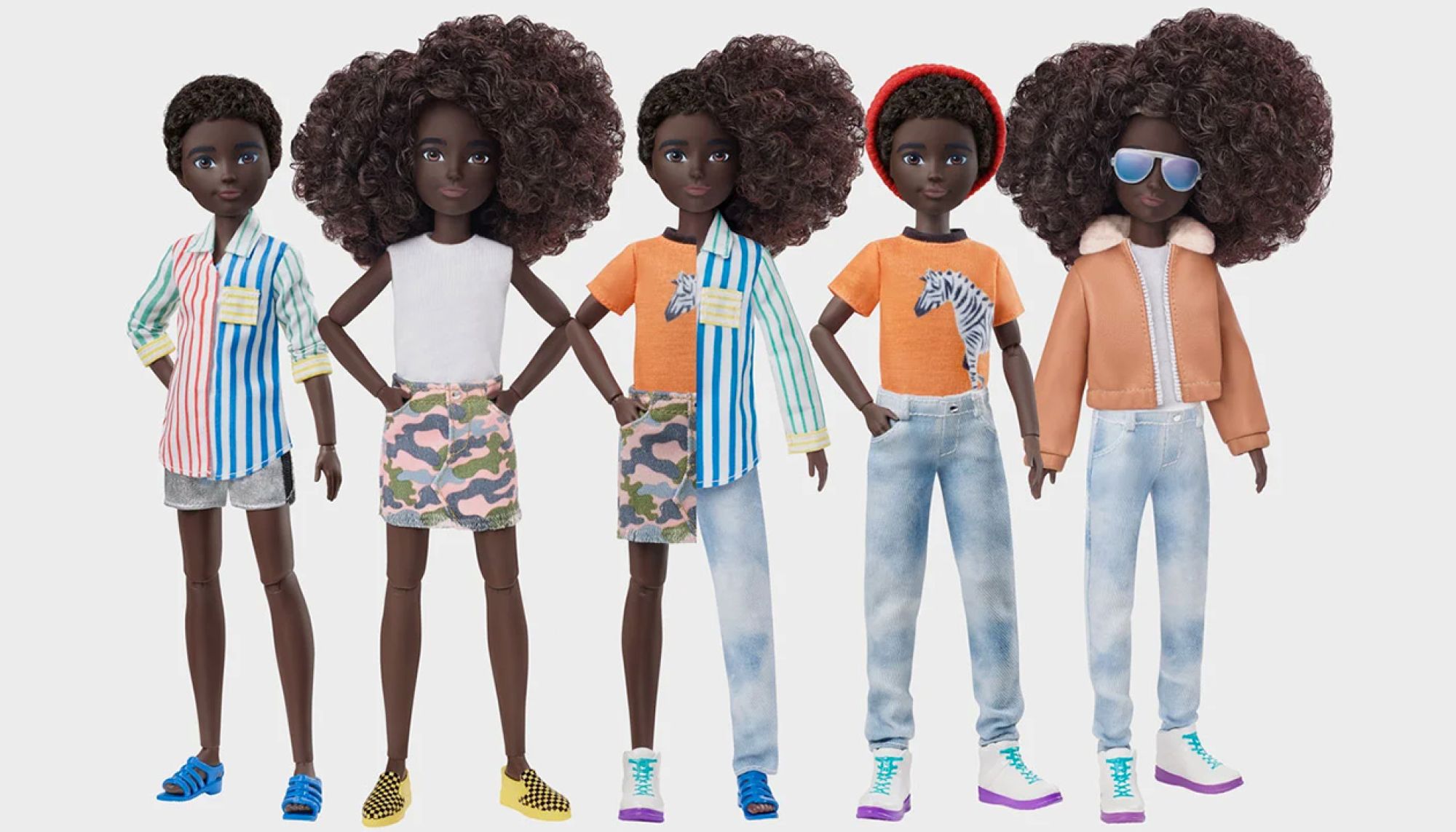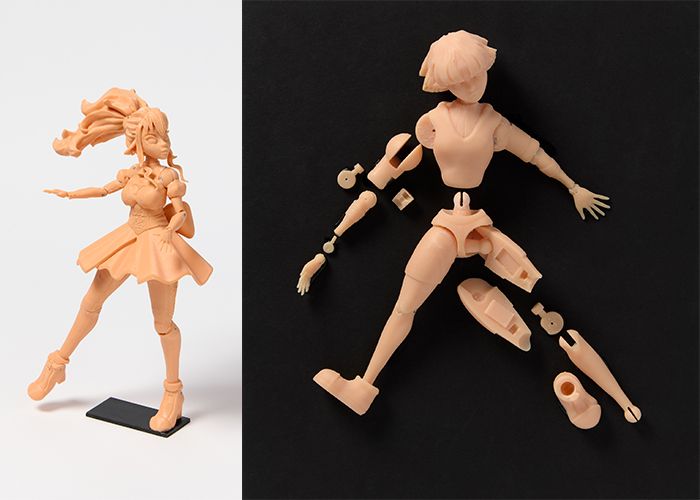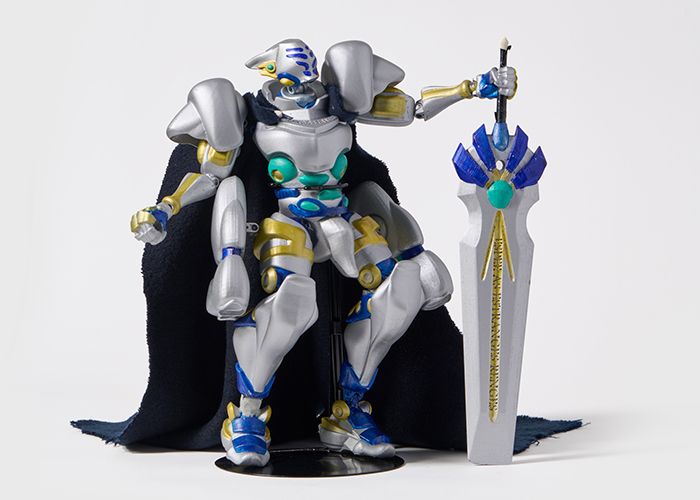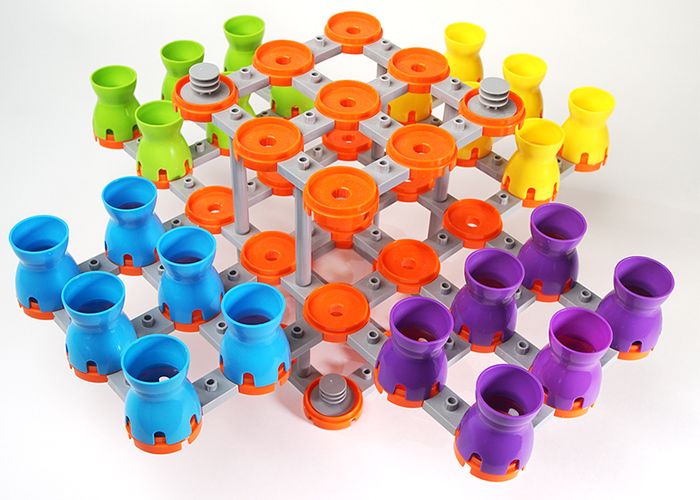Otis College’s Toy Design Program Celebrates 25 Years of Helping Students Impact Childrens’ Lives
The process of creating a successful toy isn’t always fun and games, but the end result is at the heart of Otis’s thriving Toy Design program.

Linda Jiang (’13 BFA Toy Design) was a lead designer on Mattel's Creatable World—the first line of gender-neutral dolls to hit the toy market—which was named one of Time magazine’s Best Inventions of 2019, was a Toy of The Year (TOTY) finalist, and won a Play For Change Award in Empowerment and a Power of Purpose: Diversity & Inclusion Award from Campaign magazine.
There is no unadulterated thrill like that of being a kid in a toy store, where every shelf is packed with enticing objects that promise endless entertainment and an entrée to new worlds. Except perhaps the enthusiasm of the person creating the toys. That joyful journey from inventive mind to excited hands is far more elaborate, collaborative, and intriguing than most people realize, and for the small percentage of designers who get to launch a toy and shepherd its path to the shelf, it’s also a dream come true. “I think it’s really interesting when people say, ‘So, you just have an idea and then it becomes a toy?’” says Joyce Mesch with a laugh. “There are actually quite a few steps before you even get the idea.”
Mesch is a faculty member in the Toy Design program at Otis College, and like all of the program’s faculty, she’s also a working toy designer—she even lent her voice to one of the talking Cabbage Patch Dolls she designed for Mattel. The curriculum in the Toy Design program—one of two BFA programs offered in Toy Design in the United States—addresses every aspect of the toy creation process, and has for the past 25 years when it was launched. “My mission,” says Jennifer Caveza, Chair of the Toy Design program, “is to provide an unparalleled educational experience for our students while preparing them for successful careers."
So, just what exactly goes into the making of a successful toy? Let’s take a peek behind the curtain!

3D-printed action figures by Kitty Muntersbjorn, Subin Yi, and Melissa Nawas—all Toy Design class of 2023—for the Design Prototyping III class at Otis College. Photograph by Brica Wilcox/Otis College of Art and Design.
According to Mesch, the process starts with research, including consumer insights, themes, trends, opportunities in the market, competitive products, and, sometimes, just a toy designer’s own personal inspiration. “There are so many reasons you might set your objective,” she says. Once the research has been exhausted and the objective of the toy has been identified, a flurry of ideation begins during the concepting phase.
Brainstorming is the name of this game, when toy designers get to explore, experiment, and follow all their inspirations. The goal is to generate unpolished ideas fast and furiously, creating a sea of inventive possibilities. “Then we sift through those rough ideas,” Mesch says, “and apply our knowledge from our research to narrow them down to what we would call the best idea, keeping our objective in mind.” That “best idea” is then refined, evaluated, and refined some more.

“Kitty Cakes” doll by Henry Polaha (’22 BFA Toy Design) for the Toy Design V–Preschool Design course at Otis College. Photograph by Brica Wilcox/Otis College of Art and Design.
Once the concept is thoroughly polished, the future toy makes its real-world debut in the form of a rough model. That’s when the extensive testing begins, to make sure kids think it’s as cool as the designers who created it, and to gauge and improve its safety—one of the most crucial elements of a toy.
Cost—of production, packaging, shipping, etc.—wields great influence on a finished toy and comprises the next step in the toy design process. This is probably a toy designer’s least favorite phase, but Otis’s Toy Design program proves there’s plenty of room for creativity here, too. “There are all these tricky ways to cost-reduce something that doesn’t necessarily have to do with removing any of the magic or fun from the toy,” Mesch says, such as trimming a quarter-inch off the packaging size, or reducing the amount of fabric used for a plush toy or a doll’s clothing. “I tell students that if you take it from two bows to one bow, you’re only saving half a cent per toy. But when you’re making 200,000 toys, that adds up.”

3D-printed prototype, Robot Knight, by Joseph Kim (’17 BFA Toy Design) for the Toy Design III–Action Figure Design course at Otis College. Photograph by Brica Wilcox/Otis College of Art and Design.
Prototyping is the phase when a toy really takes its shape and begins to look like the finished product that will catch kids’ curiosities, enable hours of play, and, hopefully, inspire lifelong memories. As costs are considered and adjusted, engineers take the rough model and cement its design specifications. Computer-designed prototypes are produced and refined, preparing the toy for efficient reproduction, until the functionality and look of a final model have been approved. What was once just an idea in a toy designer’s mind, is now totally play-ready.
The toy comes to life during production, or, in other words, the physical development leg of the journey begins. “All the 2D and 3D assets are given to a product development team and they work as the liaison with the factory and engineering,” Mesch says. The factory begins the tooling process: making molds, procuring the right kind of machinery for parts that need to be cut or produced, and gathering any necessary tools for tasks like rooting hair in doll heads or painting faces—all of the details that make a toy’s magic seem like, well, magic. The first “engineering pilots”—a series of sample prototypes—are sent for approval to make sure the manufacturer’s production looks and functions the way it’s supposed to. Once the factory gets the thumbs up, the toy goes into production.
Otis College Toy Design alumnx answer the question: What’s the one thing most people don’t know about Toy Design?
Lastly is the moment we’ve been waiting for—the brand-new toy is packaged, shipped, and stocked on shelves. Its final destination? Eager hands, pride of place in a kid’s bedroom, and top billing in the dynamic imaginations of children around the world.
In the past, the entirety of this toy creation process would take two to three years. But in today’s rapidly changing market, the timeline to get a toy on store shelves can be as short as six months. This increasingly fast pace is just one of the demands Otis Toy Design students are prepared to meet with creativity and drive as they explore and experience every aspect of the process.
“One of the best things about Otis’s program is that we give a little bit of a lot of different things and that’s enough for students to make informed decisions about what kind of toy designer they want to be,” Mesch says. “Even though all our students are going through the same curriculum, we don’t end up with all the same kind of toy designers because people are going to learn to play to their strengths and decide what they like or don’t like.”

“Potion Pals” plushie design by Anika Amrikhas-Armstrong, Toy Design class of 2024, for the Toy Design I–Plush Design class at Otis College.
The program is also fortified with tons of real-world experience, through faculty who are all also working in the industry and can relay first-hand the challenges and thrills of actually making toys for a living. There are also incredible internship opportunities and inspiring semester-long projects sponsored by various toy companies, such as Mattel, Spin Master, and Jazwares—many of them located close to Otis’s Los Angeles campus—who know they’re getting access to the industry’s brightest up-and-coming creators. “The industry supports us in a big way and loves Otis students,” Caveza says. “They leave here very well-rounded, with a lot of knowledge. They know and understand the entire design process.”
Brandon Sopinksy (’06 BFA Toy Design) is one of the Toy Design alumnx who turned his childhood love of action figures into a dream career. After graduating Otis he joined Mattel as an entry-level designer and got to design Marvel and DC toys and even worked on the iconic Masters of the Universe brand during his 13 years there. He then joined Australia-based Moose Toys—the company behind Magic Mixes, Shopkins, and the incredibly popular Treasure X—where he is now a design director. It’s a career evolution clearly rooted in his time at Otis College. “Anyone who has come out of Otis just knows they have more of that full-360 skill set or understanding of the toy industry,” Sopinsky says. “Being in the program really opened my eyes to how applicable all the different courses are to more than just making toys. You’re kind of getting a marketing degree; you’re getting a psychology degree, you’re getting mechanisms and engineering and model-making and designing and presentations.”

Over a two-year period, Dave Schultze, an instructor in the Toy Design program at Otis College, developed Gridopolis with the input and participation from Otis Toy Design students. The game became a Kickstarter campaign that was funded in August 2019 and has since won a Mensa Select Award, was a finalist for STEAM Toy of the Year, and has been featured on Kelly & Ryan, Newsweek, New York magazine, Forbes, and KTLA 5 to name a few. Gridopolis also recently hit shelves at Barnes & Noble stores across the country.
The program may take a student’s love of toys and fortify it with technical skills and in-depth knowledge of the design process, but the curriculum also provides a solid foundation from which each student can grow into their own. For Daphne Yap (’04 BFA Toy Design), that meant taking what she learned and, after working for two years in toy design, parlaying it into a successful career in the film industry creating concept art for character design, costumes, and props, helping to create the captivating worlds of Avatar, Maleficent, and Thor, among others. Though these may seem like disparate paths, Yap doesn’t see it that way. “It’s all about imagination,” she says. “You still get a finished product, except one ends up on screen and one ends up in the marketplace. The nature of a toy is that it’s fun and playful and it deals with humanness and creativity. How can it not apply to other things?"

